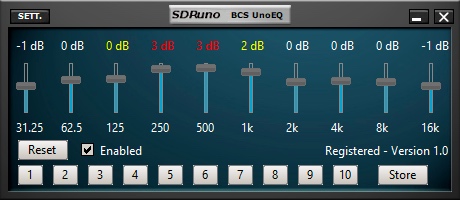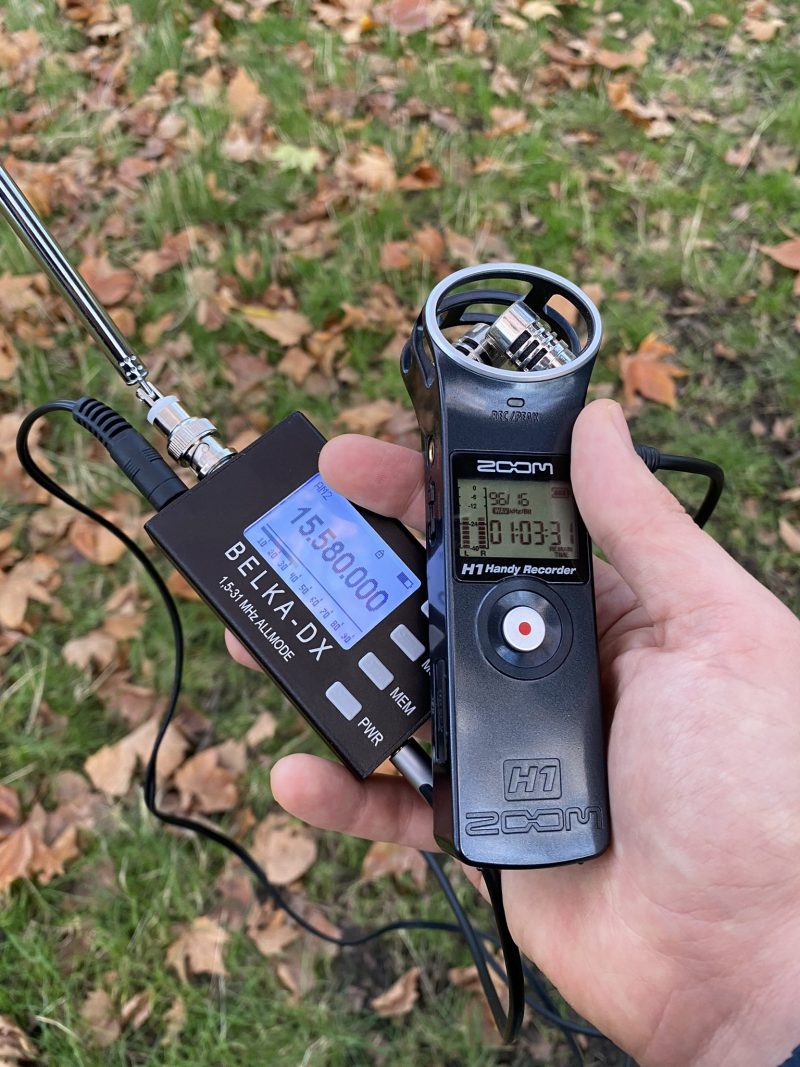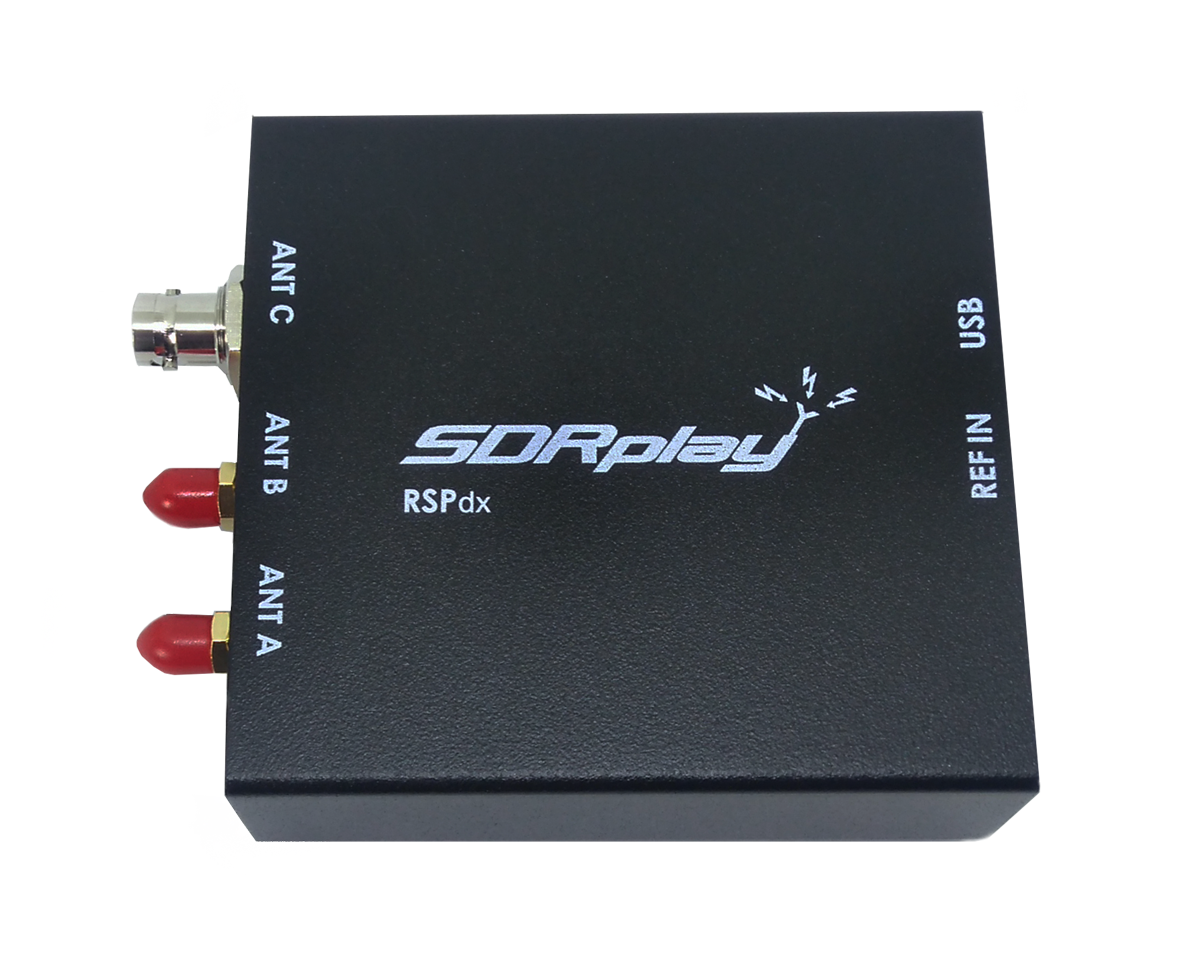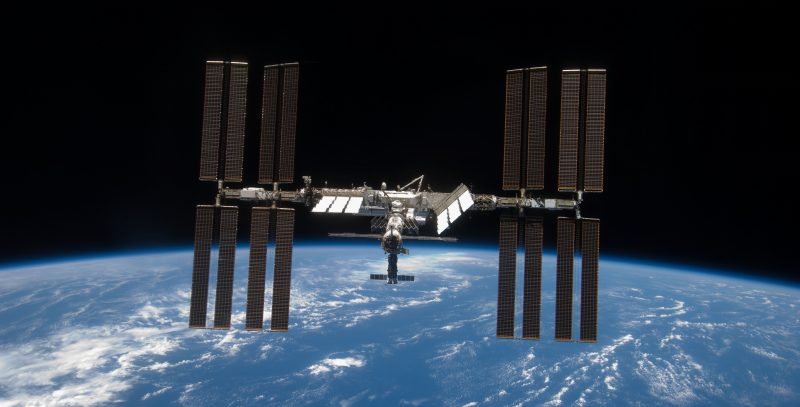 Many thanks to SWLing Post contributor, Mike Ladd with SDRplay, who shares his latest SDRuno tutorial video:
Many thanks to SWLing Post contributor, Mike Ladd with SDRplay, who shares his latest SDRuno tutorial video:
Click here to watch on YouTube.
Click here to purchase the new EQ plugin via Black Cat Systems.

 Many thanks to SWLing Post contributor, Mike Ladd with SDRplay, who shares his latest SDRuno tutorial video:
Many thanks to SWLing Post contributor, Mike Ladd with SDRplay, who shares his latest SDRuno tutorial video:
Click here to watch on YouTube.
Click here to purchase the new EQ plugin via Black Cat Systems.
 I’m so pleased to see a fascinating new post from our friend London Shortwave this morning.
I’m so pleased to see a fascinating new post from our friend London Shortwave this morning.
In his latest article, London Shortwave demonstrates how he has been making super simple spectrum recordings by pairing the new Belka-DX receiver (which has an I/Q out port) with a Zoom H1 handheld digital recorder. The recorded I/Q files are then imported into SDR# for tuning and listening.
The process is quite easy to follow and he includes a number of examples–a highly-recommended read!
 If you’ve been thinking about pulling the trigger on an Airspy product, now’s the time!
If you’ve been thinking about pulling the trigger on an Airspy product, now’s the time!
Airspy is once again offering huge discounts during their 2020 Black Friday promotion.
For example, their Airspy HF+ Discovery SDR–which I consider to be one of the best HF SDRs on the market–is 30% off ($119 US). This is a phenomenal deal on an amazing SDR!
 The YouLoop antenna is only $20.97 US. Click here to read my review of the YouLoop.
The YouLoop antenna is only $20.97 US. Click here to read my review of the YouLoop.
That’s such a good deal, I’m contemplating the purchase of a second one.
Both the HF+ Discovery SDR and YouLoop are the major components of my portable SDR DXing kit. During the Black Friday sale, you can purchase both for $141 US! That’s much less than the normal price of the HF+ Discovery alone.
It seems all Airspy distributors are participating in the sale, so click here to find the distributor that ships to your part of the world.
[Just found out the Frugal Radio channel also discovered this sale!]
 (Source: SDRplay via Mike Ladd)
(Source: SDRplay via Mike Ladd)
SDRuno 1.40.2 has been released. This is to fix the ini file corruption issue we posted about recently, but it also introduces some new features and more plugin functionality. Release notes can be found here: https://www.sdrplay.com/docs/SDRplay_SDRuno_Release_Notes.pdf
Please note that the SDRplay plugins and community plugin installers that are included in the SDRuno installer are also available on our downloads page and will be updated when needed independently of SDRuno. If you are installing them separately, please make sure you get the right installer for the version of SDRuno you are using.
Added
• Hotkey to start/stop stream – P.
• Support for loading and saving profiles (supports multiple VRXs).
• Profile file area in the memory panel below the memory bank file area.
• Button in the memory panel to store profiles.
• Checkbox in the main panel settings to disable and hide the Bias-T function.Changed
• LO and VFO for VRX#0 now separate on start-up and when loading a profile.
• ini file is only saved when SDRuno closes cleanly.
• Halved the size of the memory bank file are in the memory panel to accommodate the profile file area.
• Overhaul of the minimise and restore functionality (now only main panel appears in the taskbar when minimised).
• Plugin Control panel look/feel now matches the rest of the SDRuno panels.
• The default directory for community plugins is now the same as in the Community Plugins installer for ease of use.Fixed
• Memory panel being flagged as modified when it is not.
• Check for new version can sometimes get something other than the version number.
• HDR 630m band was non-functional due to the wrong centre frequency being used.
• If decimation had been set before the 10m band was selected, the decimation value would be wrong after the band was unset.
• Cancelling wav file open window on start-up allowed SDRuno to continue to open with no input.
• SDRuno could crash on start-up if the memory bank referenced to be open was empty.
• Clicking on the frequency title in the memory panel to sort the frequency list could cause the
current band to be unframed.
• The Plugin Control panel will no longer allow the SDRuno Plugins folder to be selected when
using the right click method as community plugins should be stored elsewhere.
• Manual frequency entry after being band framed did not disable the notch filter.
• Pausing a memory scan could make it impossible to un-pause.Known Issues
• SP2 CWAFC drift issue (Zoom/window size/freq display)
• IF output mode disabled SP1 spectrum mouse clicksPlugin information can be found on: https://www.sdrplay.com/plugins/
Many thanks to SWLing Post contributor, Paul Rawdon, who writes:
Hi Thomas
I was browsing through AliExpress and came across a cloned version of the SDRplay RSP1A, the price being asked is slightly lower than the genuine version from SDRplay. I notified SDRplay of what I found. They pointed out that as it is a clone it is unlikely to work with any of their software.
You may like to notify readers of this because it really amounts to a scam.
The AliExpress advert can be seen here:
I do own the genuine RSP1A and yes it lives up to the positive reviews out in internet land.
Thanks for the work you put in to SWLing.com there’s always something interesting to read.
73s
Paul Rawdon
Thank you for bringing this to our attention, Paul! Yes, this is a blatant fake RSP1A clone and, as you say, only a few dollars cheaper than the real thing. I suppose the manufacturer is simply hoping the buyer doesn’t realize it’s fake.
If you’re interested in purchasing an SDRplay product, go directly to their website and purchase from an authorized distributor. Not only will it carry a warranty, but you’ll know it will work with SDRplay’s SDRuno app.
 Many thanks to SWLing Post contributor, Dan Van Hoy (VR2HF), who shares the following guest post:
Many thanks to SWLing Post contributor, Dan Van Hoy (VR2HF), who shares the following guest post:
by Dan Van Hoy (VR2HF)
I’ve recently had a lot of fun learning about the current batch of ham satellites and operating through some of them for the past several months with only a Diamond discone (and a short run of RG-213 double-shielded coax), Yaesu FT-817 (for SSB/CW) and TYT TH-9800 for FM satellites (more power, Scotty!). This simple set-up has yielded hours and hours of great fun. The last time I did satellite work was in the ’70s making contacts from my car through Oscar 6. If I had a car here in Hong Kong I might try it again!
Here’s my living room TV tray and sofa shortwave and satellite station (no XYL in house at the moment).
One of the recent highlights for both newcomers to satellite operations and old-timers was working the International Space Station’s (ISS) new FM repeater which came on the air in early September. It is a specially modified Kenwood D710-GA VHF/UHF transceiver. Unfortunately, it was only operational for about a month. For the past several weeks it has been used mostly in APRS mode.
The ARISS FM repeater runs five watts and sounds just like a regular terrestrial repeater in many ways. You can work it with any dual-band VHF/UHF FM rig and the right antenna. Full-duplex is not required, but it helps. Lower power requires some kind of gain antenna, but receiving can be done with simple antennas.
The ARISS organization just updated the schedule for the ARISS operation with this announcement:
“Next mode change (cross band repeater) targeting early December.”
YEAH! What a nice Christmas present!
Here’s a link to the full ARISS information page:
https://www.ariss.org/current-status-of-iss-stations.html
Here’s a Youtube video of one of my ARISS contacts with E21EJC. It was right after he came back from his DXpedition hauling microwave gear and dishes out to the Thai countryside to work the QO-100 geosynchronous satellite. I tell him “welcome home and have a good rest.” Kob really is “Mr Satellite!” He has posted hundreds of Youtube videos of satellite contacts.
In addition, here is video of their HS0AJ/P special “portable” station antennas for QO-100. 10 GHz RX dish (downlink) and 2.4 GHz TX dish (the big one). I listened to Kob and his friend make several QSOs via the QO-100 WebSDR:
Amazing the things we hams do just to spray some RF in the right direction!
Presently, AO-91 is probably the most popular FM satellite, along with SO-50, AO-27 and PO-101. RS-44, a linear satellite for SSB and CW, is far and away the most popular for those modes. RS-44 is in a higher orbit providing less Doppler shift and longer contact times per pass. You can easily see from the Amsat status page which satellites are in operation and which are the most popular. Many of the ham satellites do not provide two-way communication capability, but still have beacons (CW and data) that can be heard (those are in YELLOW on the Amsat status page). Everyone with a ham callsign can contribute by by uploading a reception report of the satellites you hear or work.
Full-duplex on SSB/CW satellite work is very desirable but not mandatory. I have learned you can make contacts without it coupled with a little skill and some luck. Staying near the center of the satellite’s particular passband is helpful. Sadly, there are few full-duplex rigs available these days. One of the best may be the Yaesu FT-847 which can be found on the used market. Some satellite ops are using SDRs for RX and a ham rig for TX to achieve full-duplex. I’m going to try that soon using two Diamond discones and vertical separation.
For current status of all ham satellites and ARISS operation, go here:
https://www.amsat.org/status/index.php
For tracking the ham sats and ISS, I like the Heavens-Above app (or Webpage: https://heavens-above.com/). The Pro version of Heavens Above is worth every penny. In the app, I put only the active satellites I am interested in in the search box. That way all the remaining unusable satellites will be ignored. Heavens-Above also lists the satellite operating frequencies for a quick reference.
One cool side note. With Heavens-Above, you can also see when ISS visible passes are available over your area (almost always near sunrise/sunset). Look for the passes with a magnitude greater than -3.0. If you have clear skies or a thin layer of clouds it’s quite a treat to see the ISS zoom overhead at 17, 000 miles per hour. When the ARISS repeater is operating, you can see and hear the ISS! The screen shot above is a visible pass at -3.9 magnitude, as bright as Venus.
I have found my Diamond discone to work quite well for satellite operation. It’s probably the cheapest, simplest and most effective antenna you can use for this application If you really get interested in satellite work you can always spend the big bucks for AZ/EL rotators and beams as well as the software to run it all including tuning your rig to compensate for Doppler shift. Or you can buy quite expensive omni-directional antennas designed specifically for satellite use. So far, the KISS approach has worked well for me.
Finally, we can all get a taste of the future now by listening to the only ham radio geosynchronous satellite currently in operation, QO-100. It is centered on Europe and covers about 1/3 of the earth from Brazil to parts of Asia.
It was a thrill for me to listen (via the WebSDR listed below) to one of my new satellite colleagues, Mr Kob, E21EJC, who I call “Mr Satellite,” work Brazil and many other stations in the EU, the Middle-east and elsewhere through QO-100 during a special event operation from Thailand.
Anybody can listen to activity on QO-100 at the link below. When you get there just find the CLICK TO START SOUND! button. Then, click UNDER one of the signals in the waterfall and tune with the controls below. Weekends and holidays seem to be the best time to listen.
https://eshail.batc.org.uk/nb/
Because both the uplink and downlink frequencies are way up in the microwave bands, it’s not easy to get on QO-100, but, it appears to me, worth the effort. Maybe one day we will have two more QO-100-like birds linked together to cover the whole earth for 24/7 communication anywhere in the world. One can dream.
Full details about the QO-100 geosynchronous satellite can be found here:
https://amsat-uk.org/satellites/geo/eshail-2/
When the propagation is bad, or actually anytime, ham satellites are a wonderful alternative to HF for having fun on the air.
Sorry, gotta go, RS-44 is just about here. CQ satellite, CQ satellite, de VR2HF…
Thank you so much for the satellite overview, Dan!
You’ve inspired me to get out of my comfort zone and try a little satellite work! The perfect project to do with my two daughters. I’m such a “below 30MHz” guy, I have to remind myself that there are actually some pretty amazing things you can do further up the band! When I purchase a discone antenna, I’m going to accuse you of being an enabler. Fair warning.
SWLing Post readers: Anyone else here tune to and track satellites? Please comment!
Check out this brilliant episode of Tech Minds How It’s Made which features SDRplay: